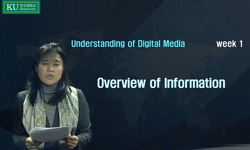We introduce a unified modular control architecture and virtual-reality evaluation framework to extend the use of socially capable humanoid robots. Our methodology is based on a unique gesture and facial expression representation module, called cascad...
http://chineseinput.net/에서 pinyin(병음)방식으로 중국어를 변환할 수 있습니다.
변환된 중국어를 복사하여 사용하시면 됩니다.
- 中文 을 입력하시려면 zhongwen을 입력하시고 space를누르시면됩니다.
- 北京 을 입력하시려면 beijing을 입력하시고 space를 누르시면 됩니다.
Towards a Unified Control Framework for Humanoid Robots and their Virtual Avatars in Physical and Virtual Reality-based Interactions
한글로보기https://www.riss.kr/link?id=A101196748
- 저자
- 발행기관
- 학술지명
- 권호사항
-
발행연도
2015
-
작성언어
English
- 주제어
-
자료형태
학술저널
-
수록면
1905-1909(5쪽)
- 제공처
-
0
상세조회 -
0
다운로드
부가정보
다국어 초록 (Multilingual Abstract)
We introduce a unified modular control architecture and virtual-reality evaluation framework to extend the use of socially capable humanoid robots. Our methodology is based on a unique gesture and facial expression representation module, called cascaded Temporal Disc Controllers (TDCs), that represents all emotional expressions, gestures and time-variant actions in a normalized mathematical space designed to accept high level control commands, while being independent of actual physical robot implementations. At the same time it also provides an underlying mechanism for avoiding repetitive behaviors and increases the “humanness” by minor random perturbations during the interaction process. Our implementation combines two available physical robots (Zeno, FACE) and their virtual representations with active perception in order to drive low- and high level reactive behaviors in support of interactive educational and pedagogical goals. Our photo-realistic representations were used in comparative evaluation studies and a low-cost Augmented-Reality interface was also developed to support seamless interaction in virtual space.
목차 (Table of Contents)
- Abstract
- 1. INTRODUCTION
- 2. METHODOLOGY
- 3. IMPLEMENTATION
- 4. VIRTUAL- AND AUGMENTED REALITY INTERFACES FOR ROBOT INTERACTION
- Abstract
- 1. INTRODUCTION
- 2. METHODOLOGY
- 3. IMPLEMENTATION
- 4. VIRTUAL- AND AUGMENTED REALITY INTERFACES FOR ROBOT INTERACTION
- 5. CONCLUSION
- REFERENCES
동일학술지(권/호) 다른 논문
-
- 제어로봇시스템학회
- Noor Ayuni Che Zakaria
- 2015
-
Study on Automatic Speed Adaptation Treadmills
- 제어로봇시스템학회
- Hee Jin Park
- 2015
-
- 제어로봇시스템학회
- Hyun Ju Lee
- 2015
-
A Study on the Energy Regeneration System of Boom for Hybrid Hydraulic Excavator
- 제어로봇시스템학회
- Ying-Xiao Yu
- 2015




 DBpia
DBpia






